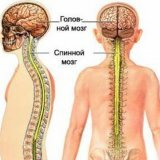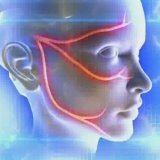Epilepsy in children
 Epilepsy in children is a pathological state of the sphere of psychoneurology, characterized by periodically repeated moments of excessive electroactivity in the brain, which causes motor contractions of skeletal muscles and epicusps in children as such. Epilepsy in children on a global scale is widespread in the world, especially in childhood, since the congenital type of epiprip is often manifested for the first time in the range of about 5-11 years or 11-17 years.
Epilepsy in children is a pathological state of the sphere of psychoneurology, characterized by periodically repeated moments of excessive electroactivity in the brain, which causes motor contractions of skeletal muscles and epicusps in children as such. Epilepsy in children on a global scale is widespread in the world, especially in childhood, since the congenital type of epiprip is often manifested for the first time in the range of about 5-11 years or 11-17 years.
It is in children that absences are revealed - states that the child does not know about, they are characterized by a short-term( from a few milliseconds to a minute, disconnection of consciousness).Parents may not notice these changes, but most parents hide the diagnosis of their children from wide publicity.
Epilepsy in children, in fact is not particularly distinguishable from epilepsy in adults, there are inherent repetitions of sudden epicasis, which differ in the intensification of the mechanism of the lesion and the nature of its nature. These are similar groups of attacks, based on mood changes of the individual: dystrophic pathology of consciousness, somnambulism, trance, dementia, psychosis with affective hallucinations.
The epipristone itself is a disorder of the motor mechanisms, the sphere of mental activity and vegetative processes. The epigenetic pathogenesis consists in exorbitant overexcitation of neuronal communication and the formation of a pathologically active cerebral genesis, a convulsive focus. This focus is irritated from time to time by abnormal factors and leads to seizures. Irritation factors are: ischemic blood circulation of the brain, perinatal pathology, intrauterine hypoxia, genetically altered predisposition, traumas of the cranium, somatic diseases, viral persistence in the body. In addition to this, epiphystones provoke oncological processes, congenital and acquired anomalies in the development of brain structures, disturbances in the structure of metabolic processes in children, and chemical-toxicological pathologies under the influence of poisonous-pathological substances.
At the heart of epiaktivity, scar tissue is formed, inside of which there is a dense cyst, it also compresses the adjacent elements of the structural brain apparatus, which irritates the nerve endings, provoking convulsions of the musculature.
Epilepsy in children can take place without convulsive readiness, only absental epilepsy manifests in children, especially this form is inherent in the age of the contingent under 7 years.
As with the usual epiprisis, and at absense, the occurrence of an aura, a harbinger of an attack, is possible.
Epilepsy in children has the following classification:
- Primarily benign, most easily transmitted and well amenable to timely treatment.
- Secondary-symptomatic, manifested in children on the existing background of the primary pathology of the structural component of the brain.
- Generalized seizures - they are bilateral tonic-clonic symmetrical, without focal symptoms, epicas and episopsychic absences in children.
- Partial seizures, which are a group of the most common epipripeds. They are subdivided, in turn, into: epipripeds without a temporary loss of consciousness, with a slight cloudiness and with generalization - a complete disconnection of the person's conscious state from the outside world, absental epilepsy in children with convulsions of all the muscles of the trunk.
- Jacksonian epilepsy in children - infrequently occurs, captures the somatomotor and somatosensory areas of the individual's body. It happens to be local and, more rarely, common.
- Posttraumatic epilepsy in children - getting injuries in an anamnesis or in the course of their passage through the birth canal, intrauterine factors of influence.
- Night epilepsy in children. The very name of which says that it occurs only while the child is in the phase of sleep, note the snacking of the tongue, spontaneous defecation or urination.
Epilepsy in children: causes of
Etiopathogenesis remains unclear until today, and it is not possible to explain it. But, most scientists in the world associate the genesis of epilepsy itself in children, with hereditary conditional factors. So it was recorded that family cases prevail over those epiprushes, first manifested in the family. In the percentage ratio investigated, the genetic predisposition reaches 40%, whose relatives in any family relationship had this disease.
There are a number of risk factors for the development of epilepsy in a child, these include:
- trauma to the skull;
- ischemic injury of cephalic circulation;
- infections of the brain, etiopathogenetically related to contamination by viruses, bacteria and parasitic agents( meningitis, meningococcemia, encephalitis, meningoencephalitis, abscess);
- oncogenesis of the brain;
- sclerosing, which is inherent more in adolescence;
- lack of oxygen supply of brain tissue, which changes the mechanisms of normal functioning of the cerebral circulation, causing pathological changes in vascular branching in children with epilepsy;
- parental errors in children's treatment or self-administration to children of medicines: antidepressants, neuroleptic group, sedating drugs, uncontrolled antibiotic therapy and use of a large dose of bronchodilators;
- adolescents use drugs( amphetamines, ephedrine, which destructively affect a specific young organism, penetrating the brain);
- hereditarily caused metabolic pathologies;
- to provoke, especially it concerns babies, epiprids can excessively high temperature parameters;
- children's age cohort up to eleven years;
- complications of the perinatal period;
- syndromal changes( antiphospholipid syndrome).
Epilepsy in children: symptoms and signs
The symptom complex is presented for each patient by individual manifestations, but there are a number of common symptoms. They are: motor pathologies, speech disorders, hypo- or hypertonus, disorders of the psychological-neurological sphere.
Types of epicaspids with their symptoms:
• Jackson epileprises are pathological lesions of specific muscle groups, they are short-lived and in a short period of time a person quickly and fully recovered. Symptoms: confused twilight consciousness, the individual is not contact at all, convulsions and numbness of the limbs occur, the lesion spreads extremely rarely on the trunk. There are phases: aura-precursor( anxiety, which warns the patient of an impending epic);Tonic contractions( the musculature is lightning fast, the head is thrown back, the fall occurs, the body arches, the apnea with the blue of the skin, the shortness of the attack to one minute);Clonic convulsions( rapid rhythmic muscle twitching, leaking saliva, foam formed at the lips);Stupor( the body relaxes, electroactivity in the brain is inhibited, spontaneous defecation and urination, areflexia);Lastly, a dream comes.
• Small seizures: minor twitching of facial muscles, sudden hypotension, absences with petrification and rolling of eyeballs in a child. This is the most common form of epilepsy in children.
• Epistatus - a series of repeated epicasures, for a short time in the unconscious state, hyporeflexia is present, tone is lowered, pupils react poorly to light and darkness, tachycardia, pulse is threadlike.
The sequence of the symptom complex is as follows:
- suddenly the baby falls;
- a shrill cry from the passage of air through a compressed spasmodic vocal cavity;
- head tilt with hypertone of the trunk;
- hoarsely-loud process of inspiration-exhalation with elements of apnea;
- pale blue skin;
- strong adhesion of the upper and lower jaw;
- convulsive phenomena;
- tongue twisting, foam from the mouth with blood from biting the tongue and cheeks;
- immersion in a dream.
The aura symptomatology includes: discomfort in epigastrium and zarudnin space, marbling of the skin, sweating, hyperemia, pupillary narrowing, visual and olfactory hallucinations, auditory hallucinations, palpitation, feeling of nausea and choking, involuntary reflexes of sucking and chewing, screaming of meaningless words, parasthesia.
Epilepsy in children of the absent type includes: sudden short-term fading during gaming activities or in conversation, lack of response to hail.
In newborns: general irritability and poor appetite.
In any children's age group: convulsions, apnea, involuntary loss of feces and urine, severe muscle spasms, twitching of the limbs, lips wrinkled "in the tube," rolling of the eyeballs, there is no sensitivity in the gums, "knocking teeth", "trembling," hypersalivation, Night epilepsy in children.
Bessodorozhnaya form: symptoms of confusion and hallucinatory phenomena, delirium, mental disorders.
Epilepsy in children: diagnosis
Diagnostic complex applicable for children should be maximally soon and accurately carried out, because it is at a young age with timely identification and proper treatment, you can quickly level out epilepsy in children.
It is important to conduct such stages of diagnosis in children:
- Talk with parents, legal representatives or guardians of the child, be sure in his presence, with the collection of anamnestic data, especially highlighting genetically-hereditary pathological propensity, the time of the first epicas and previous situations, frequency of repetitions.
- Neurologically conducted examination by a specialist doctor of the following symptomatology: migraine or any other emerging chronic headache, which can serve as the first "bell" for the epileptic formation of an organic lesion in the brain.
- Mandatory for the differential diagnostic complex and for more accurate sighting of tissue pathology, computer-resonance, magnetic and positron emission tomograms are carried out and studied.
- The main method, which is still applicable, and which is considered to be the "gold standard" for the study of epilepsy in children, is the electroencephalographic recording of activity of processes of a cephalic nature, with the definition of "peak waves".Differentiating such waves from normal, arising and with absolutely complete human health.24-hour hardware monitoring and video EEG shooting.
- Study of human biochemical indicators, for metabolic disturbance of the body and for metabolism in general.
- Examination of the ophthalmological profile for the determination or further exclusion of increased intracephalic pressure, by examining the visual disks of the patient's fundus and the state of the eye vessels.
First aid for epilepsy in children
Epipressives in epilepsy in children occur suddenly and can overtake the patient in any place: public transport, on the street, in an educational institution, a poet, it is important that the people who have come to witness the attack quickly and efficientlyTo provide first aid, because, most likely, it is from this will depend on the level of injuries received during the fall and even the life of the victim.
The algorithm for the implementation of first aid( especially in schools for such children, the teachers themselves knowing about the diagnosis of the child and, of course, primarily the parents of patients with epilepsy of children should know) includes the following sub-items:
- Try to protect the injured personThe child from traumatic factors and with epiprustopee, and with the fall of the child and the ensuing convulsions( postpone the objects stitching, cutting, with sharp angles).
- Undress or loosen clothing items that can compress, interfere with breathing or blood circulation of the trunk( watches, belts, scarves, rings, ties, scarves, unfasten the collar buttons and loosen the cuffs).
- Make the head turn to the side to prevent the tongue from falling into the pharyngeal space and the associated apnea with suffocation, do not try to prevent convulsions, do not hold the limb during epipriposition. It is better to put soft things under your upper shoulder girdle, head and torso, a pillow or clothing - any soft stuff so that the child does not hurt himself much with convulsive shocks.
- Do not try to unravel the jaws, especially with solid objects, it can injure the patient and the person who provides the help. The helper can be bitten, the patient may break his teeth, having bitten the object and swallowing it, you can scratch the esophagus, causing bleeding or stopping breathing, with clogging the larynx or dropping particles into the bronchi - especially in children, due to the anatomical features of the bronchial structure.
- Do not try mouth-to-mouth or mouth-to-mouth resuscitation with epiprip, it is better to put a soft towel or handkerchief between the jaws, the sleeve of the shirt, so that the patient does not bite the tip of the tongue and, under strong compression, break the tips of teeth,their.
- Do not try to give a drink to a sick person, because he is in a coma unconscious state, this will cause only a choking or a person can completely choke.
- It is important to at least tentatively mark the timeframe of the epi-attack itself and inform them about the arrived ambulance.
- To call for medical first aid, for direct rendering of medical specialized qualified help with epimetal and elimination of consequences of his - injuries.
- If the patient is plunged into a dream, then do not wake him, the nervous system thus "rests" and it is not advisable to violate this process.
Epilepsy in children: treatment of
The complex of treatment measures is quite extensive, the children pursue the goals of early prevention of the degeneration of sporadic seizures into a serious diagnosis with frequently repeated epiprids. In time, the diagnostic complex allows you to more accurately determine the selection of further therapeutic procedures and prevent misdiagnosis and side effects from antiepileptic drugs.
In childhood, it is important for parents or guardians to determine the treatment tactics with the attending physician and in what conditions it is best used - outpatient or placement of the child in a hospital for daily observation and correction of the applicable treatment regimens( neurological or psychiatric hospital).
The objectives of treatment procedures can be identified as follows:
• To remove the pain factor in epilepsy in children - children experiencing pain can refuse treatment, cheat with taking medications, thus worsen their condition and the effect of the healing process. This factor can be eliminated by additional prescription of pain medications, by correcting nutrition with calcium or magnesium enriched dishes.
• Prevent the emergence of the following new eprimistupov, until they are eliminated at all without further permanent presence on the therapeutically supporting medication doses of tablets. This result is achievable by taking oral tablets:
- Anticonvulsants - arrest the occurrence of convulsions in the brain's electrical activity focus itself( phenytoin, carbamazepine, levetiracetam, ethosuximide).
- Neurotropic tablets with the effect of suppressing the transfer of impulse of nervous excitement through glial cells of the brain.
- Psychotropic - transform the psychological status of the individual and the nervous system begins to function differently.
- Nootropics - improving and modifying processes occurring in the human brain.
And also resorting to non-drug treatment options:
- neurosurgical intervention,
- Wojta technique,
- nutrition correction and ketogenic diet.
• Reduce the incidence of epicasis.
• Decrease the duration of segregated epi-seizures.
• Achieve complete elimination of medication use.
• Maximize the side effects of ongoing treatment.
• Secure the society from dangerous individuals.
Treatment of this condition consists of certain stages:
- Differential diagnosis of epilepsy in children, for effective selection of treatment regimens.
- Epistatus cupping in the child, if any.
There are rules for outpatient treatment for patients:
- Compliance with the time interval of preparations and dosage assigned to a particular individual, without attempts at spontaneous replacement.
- Do not connect any other medication, without prescribing to a doctor and without notifying him about it - you can reduce or completely neutralize the effect of neurotropic drugs.
- Inform your doctor about any side symptoms, mood changes, any other disturbing manifestations. You may need a correction with the replacement of the main treatment.
Epilepsy in children: prognosis of
Medically adequate long-term treatment regimens and maintenance medications can significantly alleviate life in children with epilepsy. At best, even completely cure, eliminating epicasis, which is achievable in 80% of sick children. The prognosis is more favorable in the absence of organic pathological lesions of the brain elements.
The prognosis for the further development of the child is not burdened if the rational treatment and adjusted diet or therapeutic diet is used.
Epilepsy in children under the above procedures does not burden the life of the sick child as a whole, they can freely exist without limitations, without differing in development from their peers. Children are socially active, are involved in numerous sports, without any contraindications or risks. They attend general educational institutions, both preschool and school( teachers always, necessarily in the first order, should be notified of the presence of ailment!).
Many people continue lifelong reception of certain maintenance doses of neuroactive drugs, to prevent epileptic attacks per se.
The prognosis of epilepsy in a child can not be unambiguous, there is always hope for a complete recovery and cure for a particular individual. Everything depends not only on the child himself, but also on the great desire, patience and ability of the parent or guardian to fight for the development and creation of opportunities for his child and his whole-full participation in the society.



